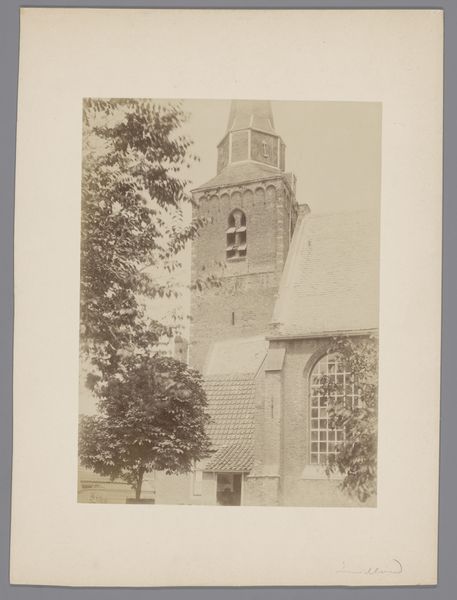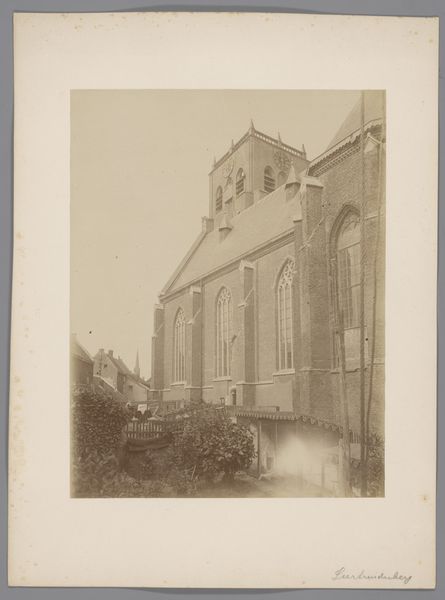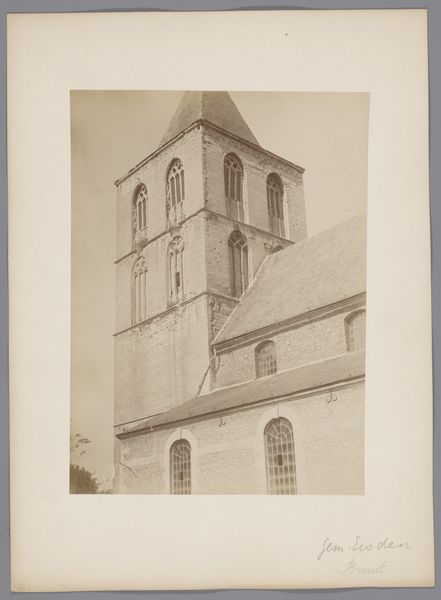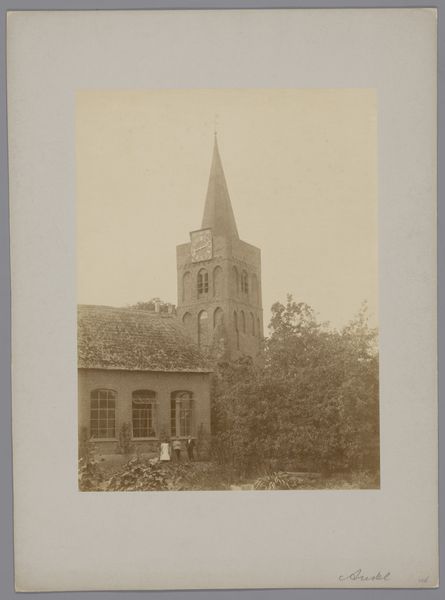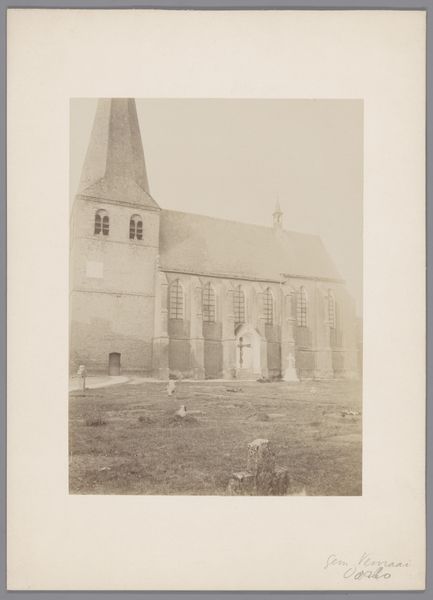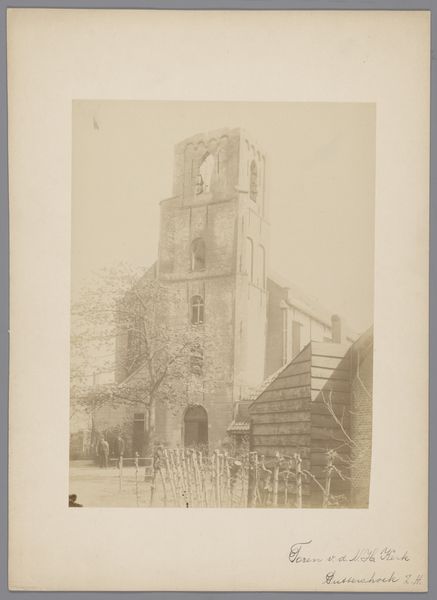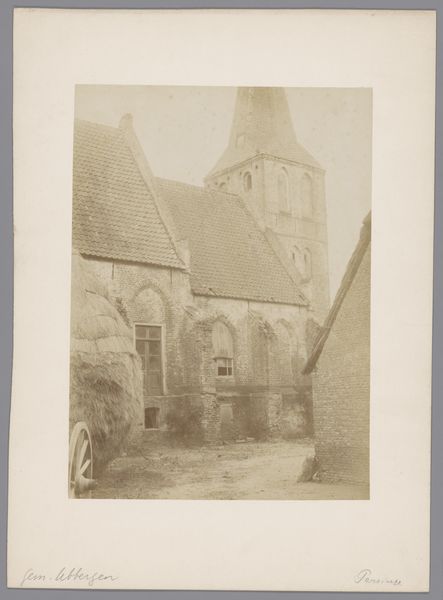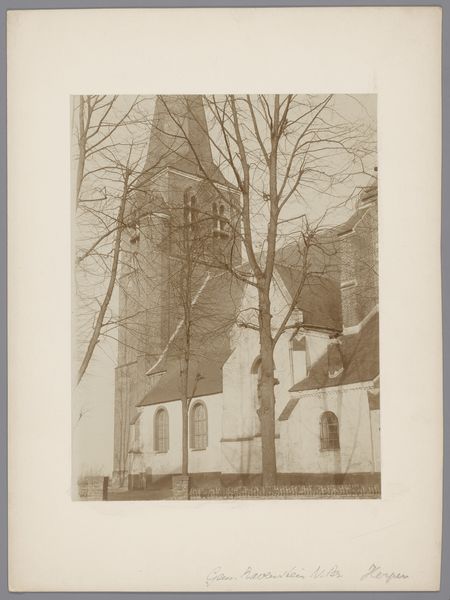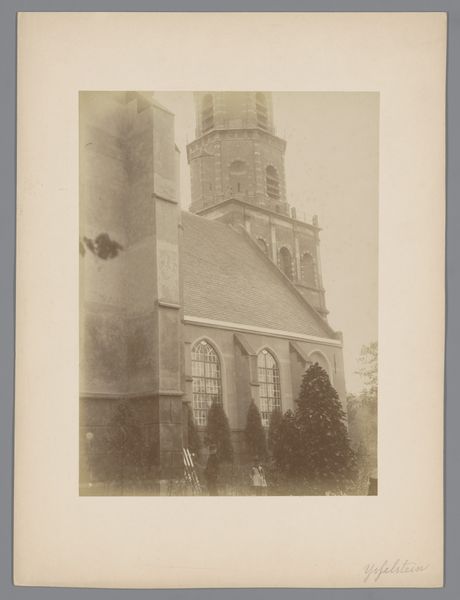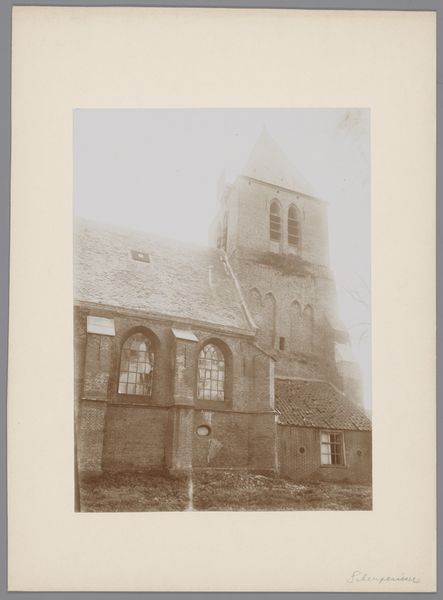
Dimensions: height 231 mm, width 169 mm
Copyright: Rijks Museum: Open Domain
Curator: This gelatin silver print captures the south side of the Sint-Pancratiuskerk in Heerlen. It was taken in 1902. The artist remains anonymous, but records identify Monumentenzorg as the entity that commissioned this photographic preservation. Editor: My first thought? It’s sort of stoic. The pale light gives this sense of solemn permanence, a kind of heavy quiet, yet… look at the jumble of bricks in the foreground! So, not quite eternal perfection, but a living monument. Curator: Exactly. We're presented with both the grandeur of the church and the very human reality of its construction, and the implied, constant labor required for its maintenance. Think about the church as a central social structure, embodying power and perhaps also resistance, as these intersect. Editor: I'm drawn to those windows, the simple arches, repeating down the church wall, and the muted quality of the brick—it invites contemplation, and makes me ponder on time, history, all that good stuff. Like echoes of prayers made solid. Curator: Precisely. Considering this image through a lens of power dynamics—who controlled the church, who labored on it, whose stories are represented and omitted—begins to unpack its many layers of meaning within early twentieth century European society. The work’s meaning can change over time and across context. Editor: Mmm, a silent sermon delivered in stone, with bricks adding their bit of raw truth to the divine equation. It is more like a building site than I would expect from something meant to portray faith, which makes this more appealing. Curator: Indeed, seeing art like this opens us up to considering historical narratives in very tactile ways. Editor: I'm taking away the importance of honoring those silent laborers of time—both in life, and in appreciating what is captured in art.
Comments
No comments
Be the first to comment and join the conversation on the ultimate creative platform.
